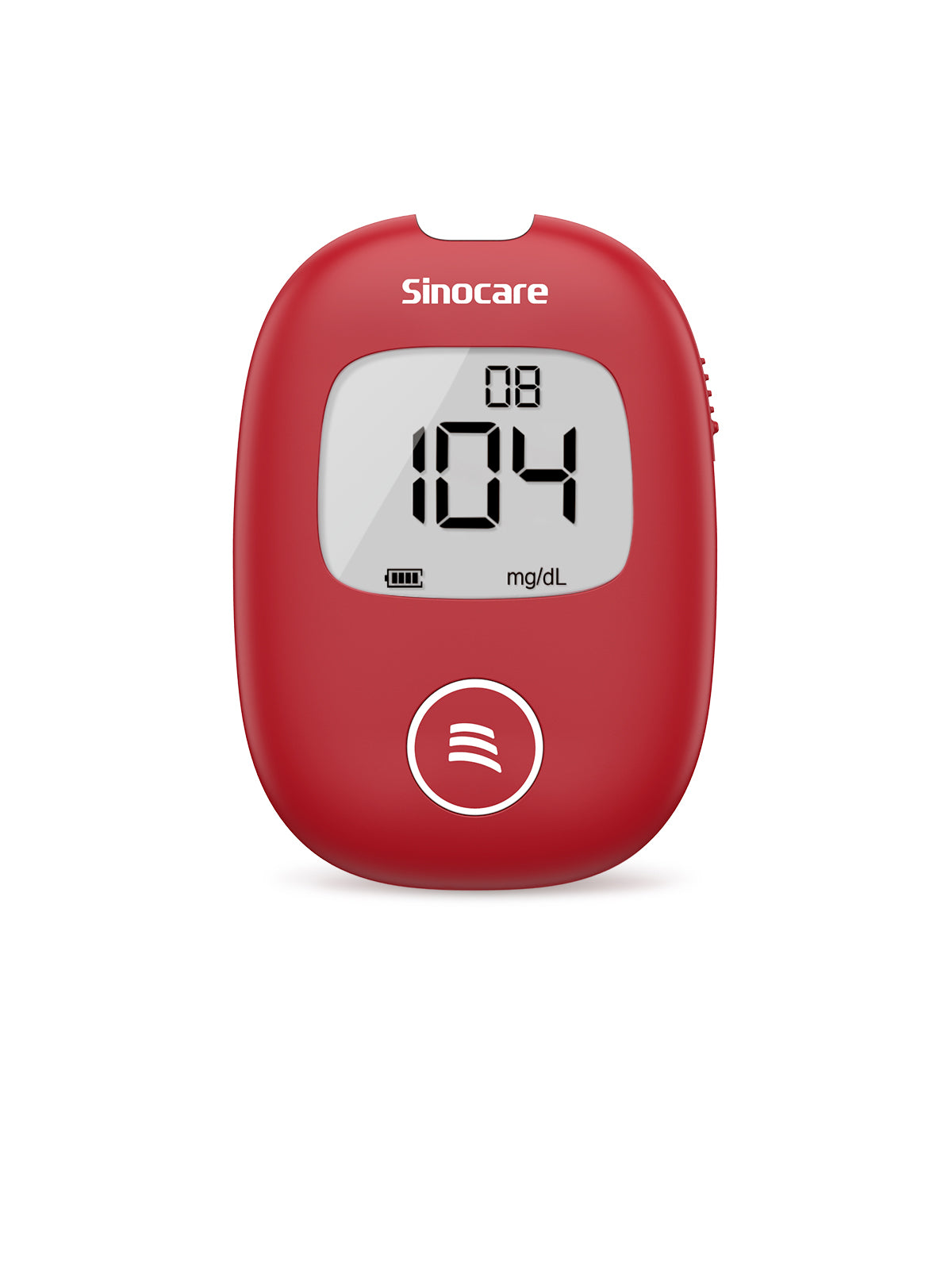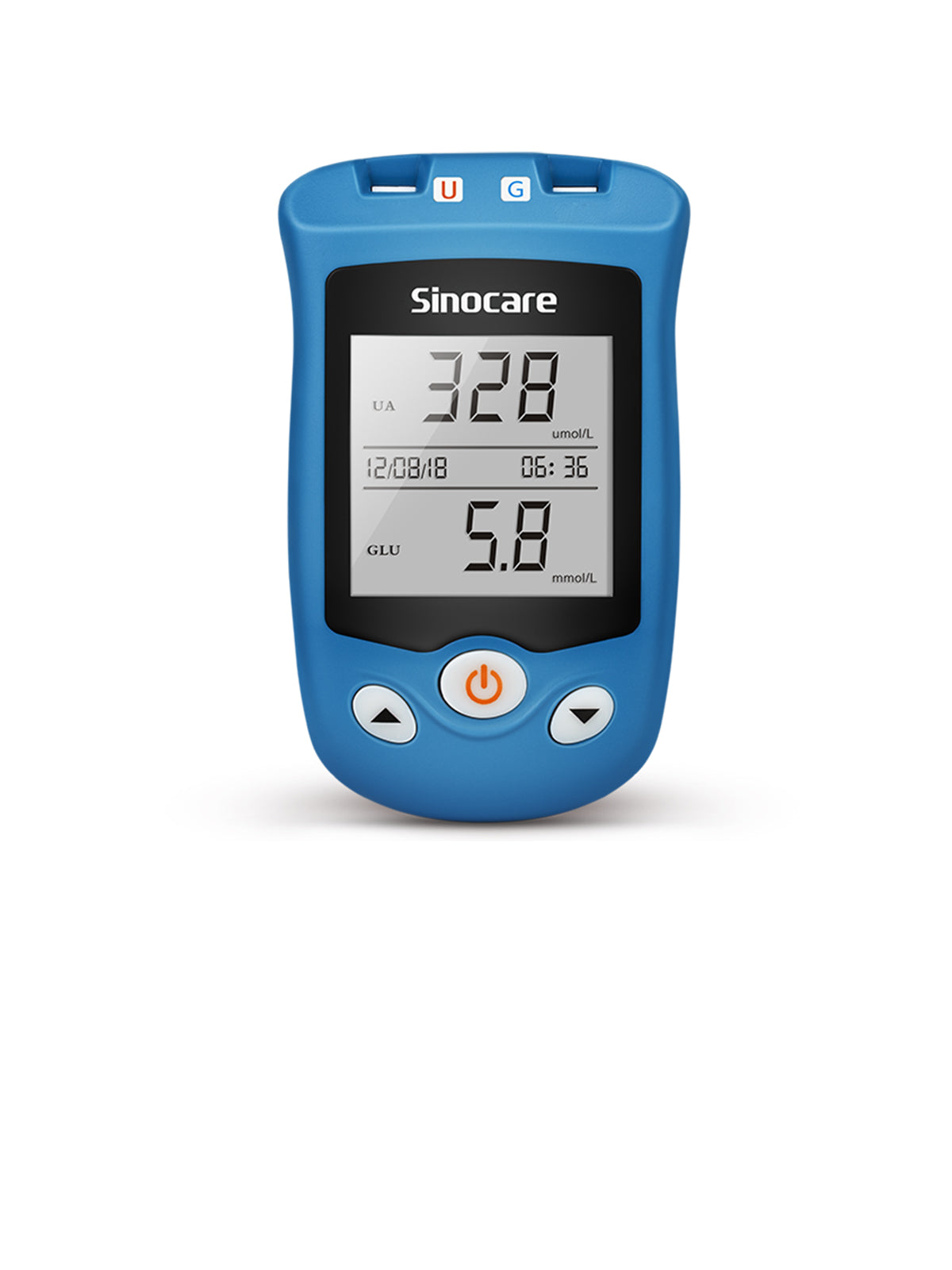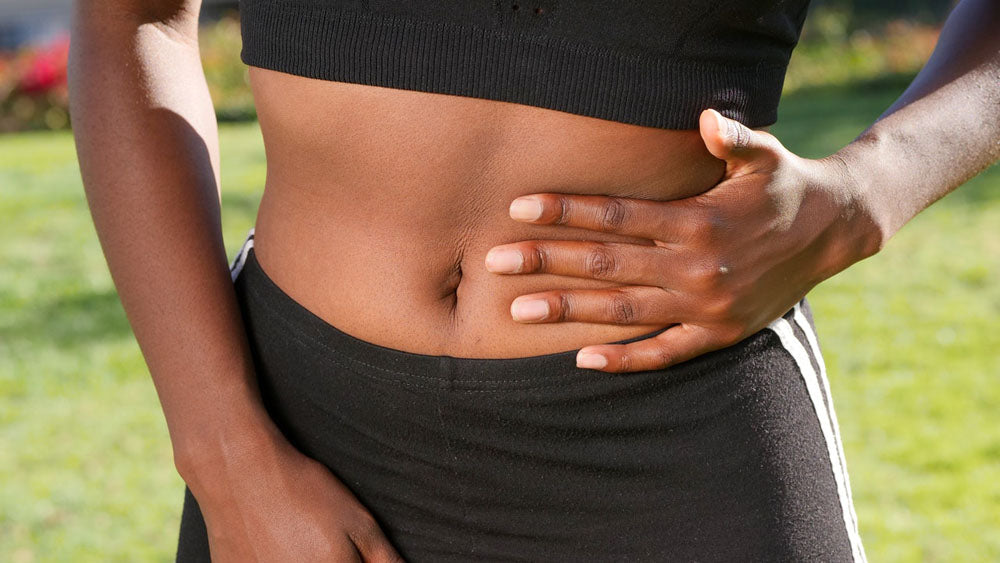Type 2 diabetes is the most common form of diabetes. It is a condition where your blood sugar is elevated due to an impairment in your body to regulate blood glucose levels. Insulin is a hormone that is secreted from your pancreas to regulate blood sugar by increasing sugar uptake into the cells to be used as fuel. In patients with type 2 diabetes, the pancreas is not making sufficient insulin, or the body cannot use the insulin appropriately (insulin resistance), leading to high blood sugar circulating in the system.
This article will talk about diabetes and your blood sugar level at the meal: the suggested level in mmol/L, the mechanism of different food to your body, and valuable tips about controlling your blood glucose level from food intake.
Is diabetes a life-long condition?
Some patients can put their diabetes in remission, meaning they can stop their diabetes medications and continue to have healthy blood glucose levels.
A team of international experts have defined diabetes remission as when your HbA1c remains below 48mmol/L or 6.5% for at least 6 months. (Diabetes UK, Diabetes remission)
How does food affect my blood sugar?
Food containing carbohydrates is broken down to provide glucose to be used by our body’s cells for energy.
There are 3 different types of carbohydrates:
- Sugars - Fruit and milk contain natural sugars. There is also added sugar in soft drinks and many other packaged foods.
- Starches such as wheat, oats, rice, noodles, pasta or potatoes.
- Fibre, usually present in vegetables or fruit that isn’t digested but helps to keep you healthy and full.

One does not have to cut all carbohydrates from the meal, but rather reduce the amount of carbohydrates being consumed or opt for a low glycaemic (GI) or low carbohydrate diet.
How many carbohydrates do I need?
There is no ideal number of carbohydrates as this varies from a person to person depending on their age, weight, physical activity, and other factors.
On average, it is reasonable to get half of their daily calorie intake from carbohydrates. This means that if an adult generally consumes 2000 calories a day, then about 900- 1000calories should come from carbohydrates. (CDC, 2021)
It is important to spread the carbohydrates to prevent high blood glucose after meals.
What is the Normal Blood Sugar Level 1/2/3 Hours after Eating?
Many people with diabetes get suggestions from their doctors or dietitians to test their blood glucose level after a meal (1 hour, 2 hours, or 3 hours).
According to the Oxford Handbook of Endocrinology and Diabetes 3rd Edition, the glucose target for type 2 diabetes is <7.0mmol/L pre-meal and <8.5mmol/L post-meal.
However, in the latest Oxford of Endocrinology and Diabetes 4th Edition, it removed the advice on target blood sugar or even checking blood sugar unless you meet specific criteria:
Self-monitoring of blood glucose levels is not routinely offered, unless taking medications which have an ↑ risk of hypoglycaemia (such as insulin) or the person is pregnant or planning to become pregnant.
Meanwhile, according to Type 2 diabetes in adults: management from UK NICE (updated in 2022), we can find a similar suggestion:
1.6.13 Do not routinely offer self-monitoring of capillary blood glucose levels for adults with type 2 diabetes unless:
- the person is on insulin or
- there is evidence of hypoglycaemic episodes or
- the person is on oral medication that may increase their risk of hypoglycaemia while driving or operating machinery or
- the person is pregnant or is planning to become pregnant (see the NICE guideline on diabetes in pregnancy). [2015, amended 2022]
Therefore, there is enough reason to discuss with your doctor again about the post-meal glucose self-monitoring.
How can I manage my diabetes with diet?
There is no special diet exclusively for people with type 2 diabetes. It is important to consider a healthy diet that is realistic and achievable and that you can stick to achieving long term goals.
Food that is labelled “suitable for people with diabetes” has no special benefit for type 1 or type 2 diabetes. However, non-nutritive artificial sweeteners are safe and may be recommended as part of your usual, balanced dietary pattern.
There are several dietary options and patterns, and it is important to find one that is realistic for you. This includes
1. Low carbohydrate diet
Low carb diet is a diet where 50- 130g of carbohydrates are consumed per day. This can help with weight loss, management of blood glucose and reducing the risk of diabetes complications.
However, this diet may not be suitable for everyone especially in children with diabetes as it can lead to poor growth, higher risk of cardiovascular complications and psychological problems (Diabetes UK)
2. Mediterranean diet
This is a diet typically rich in plant-based food such as fruits, vegetables and whole grains, cereals and legumes, and olive oil with a moderate amount of dairy, lean protein from chicken, eggs, and oily fish. Wine is included in moderation and a small amount of red meat and processed food. (Diabetes UK)
Adherence to the Mediterranean diet improves blood glucose control by reducing HbA1c and lowering fasting blood glucose, as well as reducing insulin resistance. (Martín-Peláez et al., 2020)
3. High-fibre diet
Increasing the amount of fibre in your diet can improve your diabetes control. Recommended fibre intake for adults 16 years and over is 30g per day.
Foods that are rich in fibre are filling and are mostly lower in glycaemic index (GI) which can help to control your appetite and reduce blood glucose fluctuations. (Diabetes UK)
Apart from improving blood glucose control, a high fibre diet can improve blood pressure and kidney disease which is a complication of diabetes. ((Fujii et al., 2013)
4. Low Glycaemic (GI) diet
Glycaemic index is a scale to inform us how fast your blood glucose will rise after consuming foods containing carbohydrates. It runs from 0 – 100, with pure glucose having a GI rating of 100.
Food with high GI can lead to a rapid increase in blood glucose and insulin response following the consumption of food.
Food with low GI breaks down slowly during digestion and has a slower impact on blood glucose and insulin response. This can lead to a reduction in fluctuations in blood glucose levels and reduced insulin daily requirements.
Having fat, protein and fibre in the diet can lower the GI of the food (Diabetes UK, Glycaemic index and diabetes).
A low GI diet is more effective in controlling Hba1c and fasting blood glucose compared to a higher GI diet. (Ojo et al., 2018).
5. Carbohydrate counting
For people with type 2 diabetes, carbohydrate counting can help you monitor the amount of carbohydrates you are taking and how it influences your blood glucose control and weight. (diabetes.co.uk, 2020)
American Diabetes Association adopts a diabetes plate method to help to create a healthy balanced diet consisting of vegetables, protein and carbohydrates. (AHA, 2020)
6. Diet focusing on the proportion of carbohydrates to fat to protein.
Institute of Medicine of the National Academies recommend that people get:
- 45-65% of their calories from carbs
- 20-35% of their calories from fats
- 10-35% of their calories from proteins
This can be individualised to suit your own lifestyle and preferences.
7. Low-calorie diet
This is a short-term diet consisting of meal replacement such as soups, shakes or very small portions of food with a total calorie intake of 800-1200 calories a day.
This type of diet is not suitable for everyone, and it is recommended that you speak to your doctor about it before starting as you will need a lot of support and a reduction in your blood pressure or diabetes medications before starting.
This diet usually lasts for 12 weeks followed by reintroducing normal, healthy food again. (Diabetes UK)

How can I prevent a rapid rise in blood sugar post meals?
Food that contains carbohydrates that are made up of sugar and starch will be broken down to sugar and this can lead to a rise in blood sugar post meals. However, not all carbohydrates are broken into sugar at the same rate.
The glycaemic index (GI) is a helpful scale that can inform us how fast your blood sugar will rise after consuming food containing carbohydrates. It runs from 0-100, with pure glucose having a GI rating of 100.
Food with high GI can lead to a rapid increase in blood sugar and insulin response following consumption.
Food with low GI breaks down slowly during digestion and hence have a slower impact on blood glucose and insulin response.
Having fat, protein and fibre in the diet can lower the GI of the food. (Diabetes UK, Glycaemic index and diabetes)
A low GI diet is more effective in controlling HbA1c and fasting blood glucose compared to a higher GI diet. (Ojo et al., 2018)
What should I eat if my blood sugar is high?
If your blood sugar is elevated before meals, having a low GI or a low carbohydrate diet may prevent a further rise in blood sugar.
This may also indicate that you may need extra medications to control your blood sugar.
Exercise plays a role in managing blood glucose.
People with type 2 diabetes and obesity tend to be insulin resistant. Hence it is important to know that exercise improves insulin sensitivity, and this helps in maintaining blood glucose within the target range.
The American Diabetes Association (ADA) recommends the following:
- at least 150 total minutes of moderate-intensity aerobic activity (50-70% of maximum heart rate) per week, spread over at least 3 days/week with no more than 2 consecutive days without physical activity.
- Encourage to reduce sedentary time by breaking up extended amounts of time (> 90 minutes) spent sitting
- Encourage to perform resistance training at least twice a week
Monitoring blood sugar levels
If you have type 2 diabetes, pre-diabetes, or diabetes in remission, it is important to have your blood sugar checked with your doctor every year.
Your doctor may recommend a 6 monthly or a yearly HbA1c to monitor your average blood glucose.
If you are not on insulin or anti-diabetic medications, you may not need to test your blood sugar daily.
However, if you are on insulin or anti-diabetic medications, you may need to test your blood sugar several times a day. Testing is generally recommended at fasting, before meals or before bedtime, but the frequency may vary depending on your medication.
What is an acceptable blood sugar levels?
The American Diabetes Association (ADA, Standards of medical care in diabetes-2022) suggest the following targets for most adults with diabetes
- Before meals / Fasting : 80 – 130 mg/DL or 4.4 to 7.2 mmol/L
- 2 hours after meals – Less than 180mg/dL or 10 mmol/L
However, blood sugar targets should be individualised depending on several factors such as:
- Type and severity of diabetes
- Age
- Frailty
- How long you have lived with diabetes
- Pregnancy status
- Evidence of diabetes complications
- General health and other medical conditions
- Lifestyle and occupation
What happens if my blood sugar is high?
There are several reasons that can contribute to high blood sugar, including:
- Not having enough anti-diabetic medications
- Emotional stress from family or work
- Having an illness or infection
- Being inactive
- Having high sugar in the diet
You may develop symptoms such as
- Increasing thirst, dry mouth
- Frequent urination
- Dehydration
- Headache
- Blurred vision
- Weight loss
- Feeling generally unwell
(Diabetes UK, Hyperglycaemia (hyper))
What should I do if my blood sugar is high?
If your blood glucose is consistently higher than the target, you should contact your doctor as it can lead to diabetes complications such as damage to the nerve and eyes.
You will be guided to change your lifestyle by having a healthier diet or partake in regular exercise. Advise may be given to concentrate on your well-being as stress ((Diabetes UK, Stress and diabetes) and inadequate sleep (Spiegel, 1999) can lead to higher blood glucose readings.
Your doctor will review and adjust your diabetes medications accordingly.
If you are feeling unwell, having tummy pain, fever, dehydrated, or drowsy, then it is strongly advised that you see your doctor immediately as you may need emergency treatment to reduce your blood glucose rapidly in the hospital. This could be a sign of a life-threatening complication of high blood glucose such as diabetic ketoacidosis or hyperosmolar hyperglycaemic state and it is best to be treated in a hospital. ((Diabetes UK, Hyperglycaemia (hyper))
Conclusion
Type 2 diabetes is a condition that is caused by an unhealthy lifestyle from having high calorie, high carbohydrate diets, lack of exercise, stressful environments, and sleep deprivation. This is commonly seen in people in the modern era as we opt to eat processed food which is generally higher in calories, reducing energy expenditure as we rely on motor vehicles and sleep deprivation from work and family commitments. There is also a rise in obesity which predispose one to develop insulin resistance and type 2 diabetes.
To reverse and treat type 2 diabetes is to have a generally healthy lifestyle that is sustainable in the long term.
References
Diabetes UK. (n.d.). Diabetes remission. Diabetes UK. Retrieved May 13, 2022, from https://www.diabetes.org.uk/guide-to-diabetes/managing-your-diabetes/treating-your-diabetes/type2-diabetes-remission
Centers for Disease Control and Prevention. (2021, August 10). Carb counting. Centers for Disease Control and Prevention. Retrieved May 13, 2022, from https://www.cdc.gov/diabetes/managing/eat-well/diabetes-and-carbohydrates.html
Diabetes UK. (n.d.). Low-calorie diets. Diabetes UK. Retrieved May 13, 2022, from https://www.diabetes.org.uk/guide-to-diabetes/enjoy-food/eating-with-diabetes/whats-your-healthy-weight/low-calorie-diets
Intechnic, http://www.intechnic.com. (2020, February 1). What is the diabetes plate method? Diabetes Food Hub. Retrieved May 13, 2022, from https://www.diabetesfoodhub.org/articles/what-is-the-diabetes-plate-method.html
Carb counting is a way of better understanding how carbohydrates affect your blood sugar, medication requirement and insulin requirement. Diabetes. Retrieved May 13, 2022, from https://www.diabetes.co.uk/diet/carbohydrate-counting.html
Diabetes UK. (n.d.). Low-carb diet and meal plan. Diabetes UK. Retrieved May 13, 2022, from https://www.diabetes.org.uk/guide-to-diabetes/enjoy-food/eating-with-diabetes/meal-plans/low-carb
Diabetes UK, D. U. K. (n.d.). Glycaemic index and diabetes. Diabetes UK. Retrieved May 13, 2022, from https://www.diabetes.org.uk/guide-to-diabetes/enjoy-food/carbohydrates-and-diabetes/glycaemic-index-and-diabetes
Ojo, O., Ojo, O. O., Adebowale, F., & Wang, X.-H. (2018, March 19). The effect of dietary glycaemic index on glycaemia in patients with type 2 diabetes: A systematic review and meta-analysis of randomized controlled trials
Diabetes UK. (n.d.). Fibre and diabetes. Diabetes UK. Retrieved May 13, 2022, from https://www.diabetes.org.uk/guide-to-diabetes/enjoy-food/carbohydrates-and-diabetes/fibre-and-diabetes
Fujii, H., Iwase, M., Ohkuma, T., Ogata-Kaizu, S., Ide, H., Kikuchi, Y., Idewaki, Y., Joudai, T., Hirakawa, Y., Uchida, K., Sasaki, S., Nakamura, U., & Kitazono, T. (2013, December 11). Impact of dietary fiber intake on glycemic control, cardiovascular risk factors and chronic kidney disease in Japanese patients with type 2 diabetes mellitus: The Fukuoka Diabetes Registry - Nutrition Journal. BioMed Central. Retrieved May 13, 2022, from https://nutritionj.biomedcentral.com/articles/10.1186/1475-2891-12-159
Diabetes UK. (n.d.). Low-calorie diets. Diabetes UK. Retrieved May 13, 2022, from https://www.diabetes.org.uk/guide-to-diabetes/enjoy-food/eating-with-diabetes/whats-your-healthy-weight/low-calorie-diets
Diabetes UK. (n.d.). Mediterranean meal plan. Diabetes UK. Retrieved May 13, 2022, from https://www.diabetes.org.uk/guide-to-diabetes/enjoy-food/eating-with-diabetes/meal-plans/mediterranean
Martín-Peláez, S., Fito, M., & Castaner, O. (2020, July 27). Mediterranean diet effects on type 2 diabetes prevention, disease progression, and related mechanisms. A Review. MDPI. Retrieved May 13, 2022, from https://www.mdpi.com/2072-6643/12/8/2236
American Diabetes Association Professional Practice Committee. (2021, December 16). Standards of medical care in diabetes-2022. American Diabetes Association. Retrieved May 16, 2022, from https://diabetesjournals.org/care/article/45/Supplement_1/S83/138927/6-Glycemic-Targets-Standards-of-Medical-Care-in
MM;, M. (n.d.). Exercise and the Institute of Medicine Recommendations for Nutrition. Current sports medicine reports. Retrieved May 13, 2022, from https://pubmed.ncbi.nlm.nih.gov/16004827/#:~:text=The%20IOM%20calculated%20an%20acceptable,limit%20saturated%20and%20trans%20fats)
The big picture: Checking your blood sugar. The Big Picture: Checking Your Blood Sugar | ADA. (n.d.). Retrieved May 13, 2022, from https://www.diabetes.org/healthy-living/medication-treatments/blood-glucose-testing-and-control/checking-your-blood-sugar
Diabetes UK. (n.d.). Stress and diabetes. Diabetes UK. Retrieved May 16, 2022, from https://www.diabetes.org.uk/guide-to-diabetes/emotions/stress
Spiegel, K. (1999, October 23). Impact of sleep debt on metabolic and endocrine function. The lancet. Retrieved May 13, 2022, from https://www.thelancet.com/journals/lancet/article/PIIS0140-6736(99)01376-8/fulltext
Diabetes UK. (n.d.). Hyperglycaemia (hyper). Diabetes UK. Retrieved May 13, 2022, from https://www.diabetes.org.uk/guide-to-diabetes/complications/hypers










Leave a comment
All comments are moderated before being published.
This site is protected by hCaptcha and the hCaptcha Privacy Policy and Terms of Service apply.